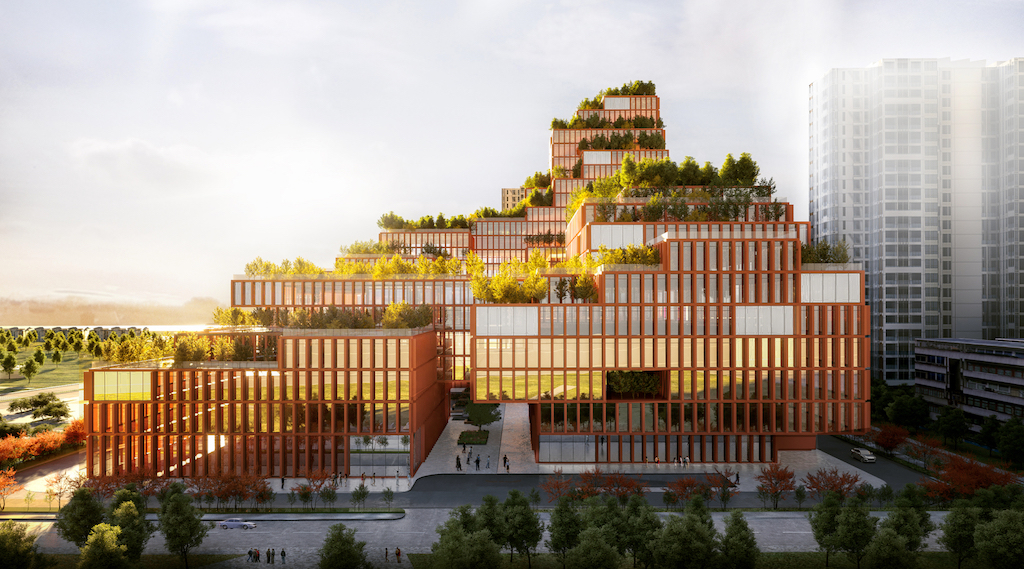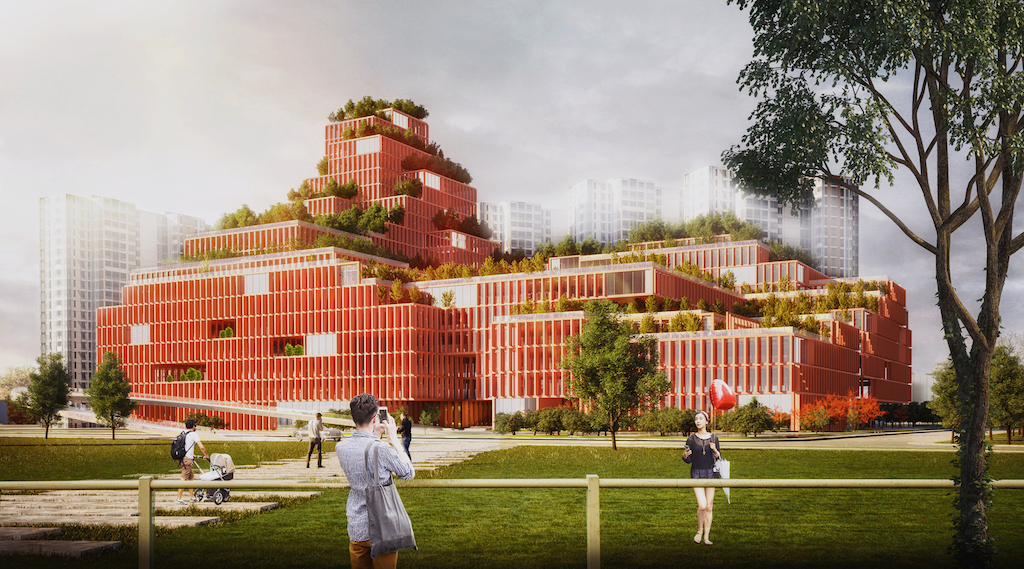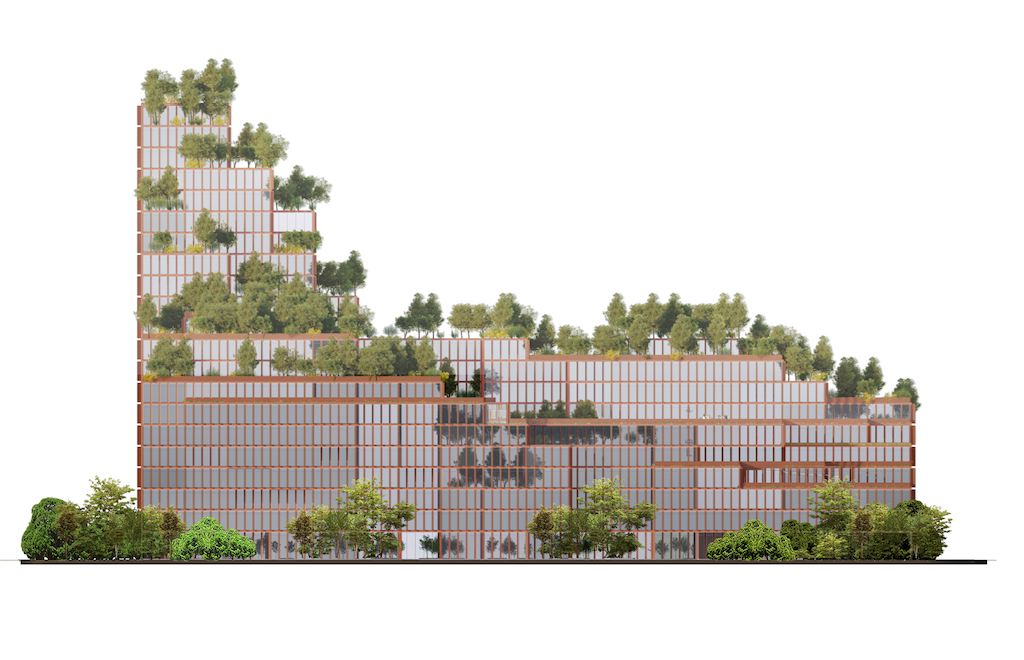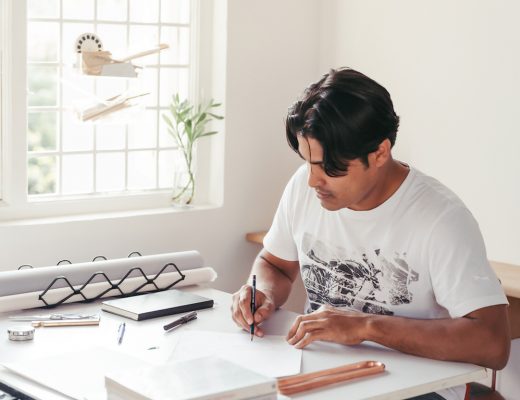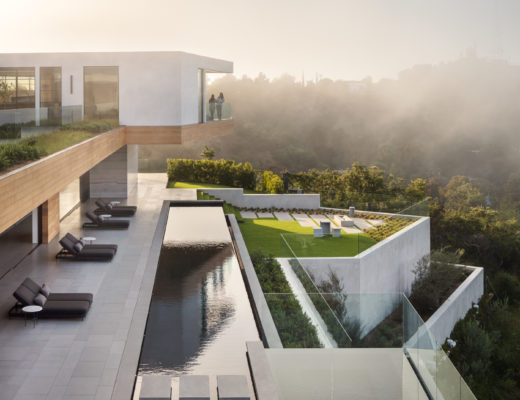Stefano Boeri Architetti (SBA) has won the international competition to design China’s largest and most innovative Rehabilitation Centre in Shenzhen. The winner of the contest was picked by a jury comprising local and international architects such as Peter Cook and Sou Fujimoto Planned to be built in the next three years, the project will put in place “a set of green terraces and overlapping spaces in a sustainable system combining nature, architecture and biodiversity and including internal gardens dedicated to rehabilitation”.
Located in the southeastern part of China, in an area currently undergoing considerable development and expansion, the SBA-designed Shenzhen Rehabilitation Center is fully accessible and completely integrated into the urban fabric of the Longhua district. Xu Yibo, partner at Stefano Boeri Architects China, shares that the “rehabilitation centre will be able to blend nature and landscape in search of the mature, safe and welcoming character of the city”.
Sited adjacent to an urban park and directly connected to the city’s light mobility system, the development is dedicated to people with disabilities aged from 16 to 60. Recognised because of its innovative approach to disability issues, the centre is projected to be a pioneer of social inclusion and cohesion for the disabled in China.
Combining aspects that have so far not been investigated like the integration of green spaces in continuity with all the different functions and at every level, and the desire to open up the structure towards the city creating a welcoming and permeable building, the proposal was in fact chosen because of its ground-breaking attitude towards the problem.
“Our project opens up a new perspective on the architecture of large rehabilitation centres. This is firstly because it perceives the concept of motor and/or cognitive disability not as an example of fragility suffered by a minority of people but as a condition that is common to us all, even if only during one phase of our life. Secondly, it offers an idea of total accessibility to spaces and rehabilitation services and thirdly because in recognizing the extraordinary therapeutic quality of greenery and nature, it offers an astonishing amount of accessible green and open spaces dedicated to all different styles of rehabilitation.” – Stefano Boeri, founder, SBA.
The project includes a wide range of programmes such as rehabilitation, training, recreational and artistic activities, accommodation, education, workspaces, museum and a sports centre. Aiming to give support to patients in their daily life, the centre offers a space for competitions, individual and team training, and numerous structures and training courses dedicated to various disabilities. It also features a rooftop garden, integrated with advanced renewable energy production systems. Housing native plant species, the greenery establishes a continuity with the adjacent public park, bolstering the relationship between inside and outside. Fundamental elements of the design, trees, and plants “mirror the changing paths and architectural volumes”. In the centre, an open public courtyard links the different areas.
“The project combines aspects for a rehabilitation centre in China that have so far not been investigated. These include innovative architecture that is also reassuring, the integration of green spaces in continuity with all the different functions and at every level, the desire to open up the structure towards the city and a welcoming and permeable building, not a fence or barrier. There is a need for a break with the past and the desire, shared with the local authorities themselves, is that of creating a new model. In order to do this, we will also make use of Italian excellence. — Pietro Chiodi, architecture design director, SBA China.
You might also like:
Zaha Hadid Architects designs a new cultural complex in China’s Changsha city
Daycare in Shenzhen by VMDPE Design features colourful open spaces to stimulate learning
Huitong Hybrid Tower in Shenzhen wins innovation award at CTBUH 2020 Awards

